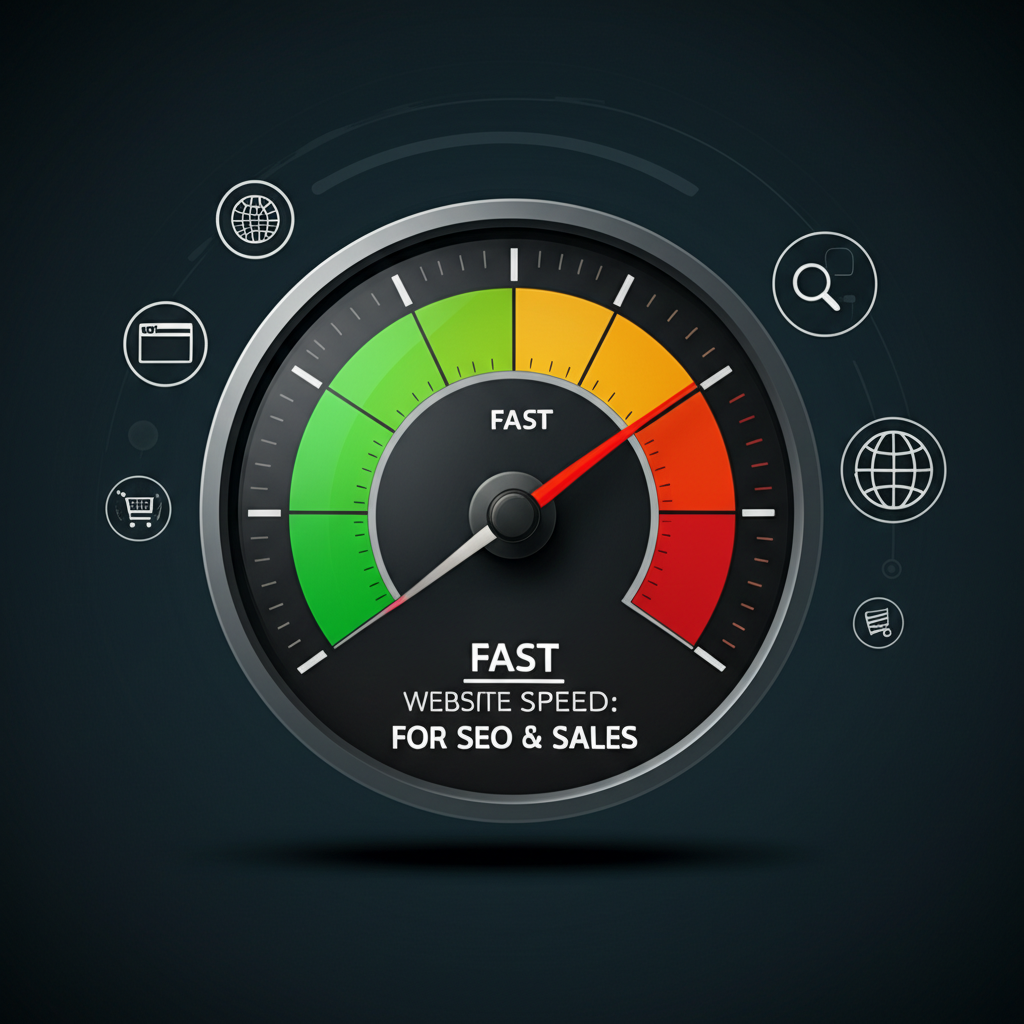- Why Website Speed Matters for SEO
- Impact of Mobile Page Speed
- The Impact of Website Speed on Sales
- Boosting Sales with Improved Website Speed
- Measuring Your Website Speed
- Utilizing PageSpeed Insights Effectively
- Optimizing Your Website for Speed
- Practical Steps to Improve Website Speed:
- Conclusion: Prioritizing Website Speed for Success
Website Speed: Crucial for SEO & Sales
Website speed is a critical factor for both search engine optimization (SEO) and sales conversions. In today’s fast-paced digital world, users expect websites to load quickly and efficiently. A slow website can lead to higher bounce rates, lower conversion rates, and ultimately, lost revenue. This article will delve into the importance of website speed, its impact on SEO, how to measure it, and practical steps to improve it.
Why Website Speed Matters for SEO

Google has explicitly stated that page speed is a ranking factor for both desktop and mobile searches. A faster website contributes to a better user experience, which Google prioritizes. When users encounter a slow website, they’re more likely to leave before the page fully loads, increasing the bounce rate. A high bounce rate signals to Google that the website might not be relevant or user-friendly, potentially impacting its search rankings.
Impact of Mobile Page Speed
With the rise of mobile browsing, mobile page speed has become even more crucial. Google’s mobile-first indexing means that the mobile version of a website is the primary version considered for indexing and ranking. Therefore, optimizing website speed for mobile devices is no longer optional; it’s a necessity. Slow mobile page speed can significantly hinder your website’s visibility in search results, especially considering the growing number of mobile users.
The Impact of Website Speed on Sales
Beyond SEO, website speed directly affects sales and conversions. A slow loading website frustrates users, leading to a negative user experience. This frustration often translates into abandoned shopping carts, lower conversion rates, and ultimately, decreased revenue. Studies have shown a direct correlation between page load time and conversion rates. Even a one-second delay in page load time can significantly impact conversions.
Boosting Sales with Improved Website Speed
Improving website speed can significantly enhance the user experience and, consequently, boost sales. A fast and responsive website creates a positive impression on visitors, encouraging them to explore the website further and complete desired actions, such as making a purchase or filling out a contact form. This positive user experience contributes to higher conversion rates and increased customer satisfaction.
Measuring Your Website Speed
Several tools are available to measure website speed. Google’s PageSpeed Insights is a popular and free tool that analyzes your website’s performance and provides recommendations for improvement. Other useful tools include GTmetrix, WebPageTest, and Pingdom Website Speed Test. These tools offer detailed reports highlighting areas that need optimization, allowing you to pinpoint specific issues affecting your website’s speed.
Utilizing PageSpeed Insights Effectively
PageSpeed Insights offers valuable insights into both the lab and field data of your website. Lab data simulates controlled conditions, while field data represents real-world user experiences. Analyzing both datasets provides a comprehensive understanding of your website’s performance. Pay attention to the Core Web Vitals metrics, which are crucial for user experience and SEO.
Optimizing Your Website for Speed
Several strategies can be implemented to improve website speed. Optimizing images, leveraging browser caching, minimizing HTTP requests, and using a Content Delivery Network (CDN) are some effective techniques. Choosing a reliable hosting provider and minimizing the use of plugins and third-party scripts can also significantly impact website speed.
Practical Steps to Improve Website Speed:
Image Optimization: Compress images without compromising quality to reduce file sizes.
Browser Caching: Leverage browser caching to store static resources, reducing the number of requests to the server.
Minify CSS and JavaScript: Reduce file sizes by removing unnecessary characters and whitespace from CSS and JavaScript files.
Content Delivery Network (CDN): Utilize a CDN to distribute content geographically closer to users, reducing latency.
Choose a Reliable Hosting Provider: Opt for a hosting provider that offers fast and reliable servers.
Minimize HTTP Requests: Reduce the number of HTTP requests by combining files and optimizing images.
* Mobile Optimization: Implement responsive design and optimize images for mobile devices.
Conclusion: Prioritizing Website Speed for Success
In conclusion, website speed is paramount for both SEO and sales. A fast website provides a positive user experience, improves search rankings, and increases conversions. By utilizing the available tools to measure website speed and implementing effective optimization strategies, you can significantly enhance your website’s performance and achieve online success. Prioritizing website speed is not just a technical consideration; it’s a strategic investment in your online presence and business growth. Continuously monitoring and optimizing your website speed will ensure you stay ahead of the curve and provide the best possible experience for your users, ultimately leading to greater success.











Leave a Reply